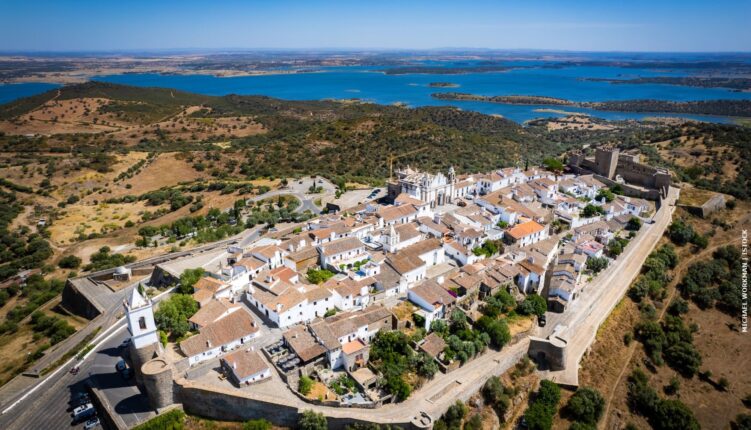Nestled in the Alentejo, the monumental structure known as the Alqueva Dam stands as a testament to human ingenuity, providing vital resources and opportunities.
A triumph of engineering
The Alqueva Dam, inaugurated in 2002 when the flood gates were closed, represents the culmination of decades of planning and construction.
During the 1050s Portugal’s dictator, António Salazar, ordered a study of the feasibility of a dam project in the Alentejo. A preliminary attempt was made after the 1974 revolution, but this was abandoned in 1978 and only in the 1990s did the Portuguese government ultimately committed to constructing the dam.
The primary purpose is water management, serving as a reservoir for the Guadiana River and its tributaries. With a staggering capacity of over 4.15 billion cubic metres, it is the largest artificial lake in Europe, spanning approximately 250 square kilometres.
Meeting diverse needs
Beyond its role in water storage, the Alqueva Dam serves a multitude of functions crucial for sustainable development. One of its primary benefits is irrigation, transforming arid landscapes into fertile agricultural regions. The controlled release of water enables farmers to cultivate crops year-round, fostering economic growth and food security.
Moreover, the dam generates hydroelectric power, harnessing the force of flowing water to produce renewable energy. This source of electricity not only reduces reliance on fossil fuels but also mitigates carbon emissions, contributing to Portugal’s commitment to environmental sustainability.
Nurturing biodiversity
Whilst the construction of large dams often raises concerns about environmental impact, the Alqueva project demonstrates a commitment to preserving biodiversity. Extensive studies and mitigation measures were undertaken to minimize disruption to local ecosystems. In fact, the reservoir has become a sanctuary for various species of birds, fish, and other wildlife, attracting nature enthusiasts and researchers from around the world.
Aldeia da Luz, once a vibrant community, found itself submerged beneath the waters of the reservoir following the construction of the dam in 2002. However, visitors to the new village of Luz, just 3kms to the east, will find a museum dedicated to the memories of life as it was before the reservoir flooded the valley.
With artifacts salvaged from the village and its environs, the museum also plays a film that shows the last year in the villagers’ life before the flooding.
A beacon of tourism
Beyond its practical utility, the Alqueva reservoir has emerged as a popular tourist destination, drawing visitors with its scenic beauty and recreational opportunities. The tranquil waters offer a serene backdrop for boating, fishing, and leisurely cruises. Additionally, surrounding towns and villages have embraced tourism, offering charming accommodations, culinary delights, and cultural experiences.
Now well-known amongst the star-gazing community, light pollution is kept to a minimum around the Alqueva reservoir thus offering ideal conditions for observing the dark sky.
Dark Sky is one of the first starlight tourism destination company in Europe. With an observatory and a guided route, it is well worth visiting them. And perfect to book for August 11 and 12 to see the 2024 Perseid meteor shower.
Empowering communities
The Alqueva reservoir has also empowered local communities, stimulating economic growth and social development. The influx of tourists has created employment opportunities in hospitality, tourism services, and related industries.
One village that has benefitted from more visitors is the medieval village of Monsaraz. However, to preserve its integrity, cars are not allowed within the city walls.
Moreover, improved access to water has bolstered agricultural productivity, providing livelihoods for rural residents and revitalising rural economies.
Challenges and opportunities ahead
Whilst the Alqueva reservoir represents a triumph of human ingenuity, it is not without challenges. Climate change poses threats of drought and water scarcity, necessitating continued innovation in water management practices. Additionally, balancing the needs of various stakeholders, including agriculture, ecology and tourism, requires ongoing collaboration and adaptive strategies.
However, there is one opportunity, now in its infancy. The floating solar facility on the Alqueva reservoir started producing electricity in mid-2023. With the ease of being able to hook up to the already existing renewable energy infrastructure, the Alqueva’s floating solar panels is aiming to become Europe’s largest floating solar park.
Click here for information on three Algarve rivers and dams.

